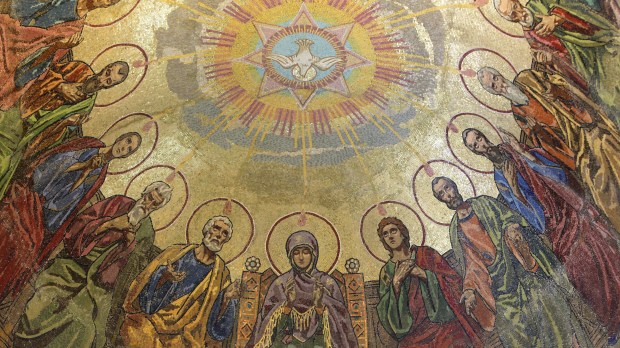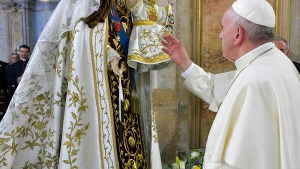There is a certain womanly touch about Christianity, and Catholicism in particular.
Some ways are obvious; others not so much.
Look at the obvious one for starters: The Church is a bride to Christ the bridegroom.
“In ancient Jewish tradition,” Brant Pitre writes in Jesus the Bridegroom, “as far back as we can tell, the Song of Songs was not interpreted as a love poem or as an allegory of the individual soul; it was interpreted as an allegory of God’s spousal love for the people of Israel.”
In fact, he says, “in its deepest mystery, all of salvation history is in fact a divine love story between Creator and creature, between God and Israel, a story that comes to its climax on the bloody wood of a Roman cross.”
The Church is now awaiting the bridegroom, like in Jesus’s wedding parables, and awaiting to join in the heavenly wedding banquet.
The Church has many characteristics of the “feminine genius” — the special grace of women.
Lists of feminine virtues can easily fall into stereotype and misunderstanding, since no woman has them all and no man lacks them all. But generally speaking, the commonly listed virtues of femininity can be attributed to the Church. To name a few:
- Receptivity: While masculinity seeks to dominate others, femininity receives and guides others, like the Church in confession and the Eucharist.
- Emphasis on the person: Masculinity focuses on tasks and things, femininity on human beings, like in the Beatitudes and the emphasis on personal discernment in Catholic spirituality.
- Empathy: Masculinity puts others’ pain in perspective; femininity empathizes with others, as in the Catholic tradition of offering sufferings for others.
The Church is a “she” for this reason too: To remind us of her particular greatness.
Then, there is the Gospels’ emphasis on women.
From the infancy narratives to the Resurrection, Luke features women. His genealogy mentions Tamar, Rahab, Ruth and Bathsheba; his story begins with Elizabeth and Anna.
Luke mentions the women who traveled with Jesus, including Mary Magdalene, Joanna, Susanna, and “many others.” Clearly, women were a key part of God’s plan for the new Church, whether they are active Marthas or contemplative Marys — which is a distinction we get from a story only Luke tells.
But the other Gospels focus on women too: Jairus’ daughter, the woman with the hemorrhage, the woman at the well, the woman caught in adultery, etc.
The Gospels signal that Jesus’s project is not an exclusively male project, and women have prominent roles from the beginning. Especially one woman.
Mary is a big deal in the Gospel of Luke. But she is perhaps an even bigger deal in the Gospel of John.
Given that John wrote it, it stands to reason that Mary had a significant influence. After all, at the crucifixion we hear that “from that hour” John took Mary “into his home.”
Ancient writers didn’t use footnotes. When Luke tells stories that only Mary could know, he shows the source of his information by saying “Mary kept all these things, pondering them in her heart.” After his introduction, John’s story begins in Chapter Two with, “There was a marriage feast in Cana of Galilee. The mother of Jesus was there.”
Mary’s Voice in the Gospel of John is the title of the fascinating 2021 book by Catholic University’s Michael Pakaluk in which he presents his own translation of John with commentary that looks for the influence of Mary.
Once you listen for her, you can hear her everywhere.
Talk about emphasis on the person: Pakaluk points out that John’s Gospel is practically the record of a series of conversations: With Nicodemus, with the Woman at the Well, with the crowds regarding the Eucharist, with the sisters of Lazarus, with the Apostles on the night before he died — then with Pilate at the crucifixion and Peter at the resurrection.
And this was not just any woman, Pakaluk says, but the Theotokos, the woman whose pondering on the Incarnation showed in the Scriptural knowledge and imagination of the Magnificat. He invites us to imagine what the conversations in the home of John and Mary were like as two contemplative souls discussed the one they both loved, the one who had impacted their lives so deeply.
And then, John invites us to enter into Jesus Christ’s story with them, in a faith like theirs that is focused on Jesus. But with a woman’s touch.


